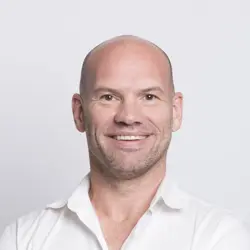Clinical Opal - Male body dysmorphic disorder
John is a 24-year-old male who works as a personal trainer at a local gym. He has been weight training with a focus on building muscle since he was 16 years old. He is 183cm tall and weighs 88kg.
He is preoccupied with the idea that his muscles are not big enough and that he needs to continue to work out to build more muscle. He measures his muscles weekly and compares himself to bodybuilders. He has a strict diet and exercise regimen, and he becomes extremely anxious if he misses a workout or deviates from his diet.
John has a history of depression and anxiety, which he says have worsened since he began working as a personal trainer. He often feels inadequate and believes that his value as a trainer is tied to his muscle size and physique.
What specific diagnosis should you consider for John?
John may have male Body Dysmorphic Disorder (BDD) related to muscle-size. BDD is a health condition characterised by a preoccupation with perceived defects or flaws in one's appearance that are not noticeable to others or are only slight(1). In John's case, his preoccupation is with his muscle size. This is known as muscle dysmorphia(2). This is significantly impacting John’s mental and physical health.
John's treatment plan is likely to involve a combination of non-pharmacological therapy and medication (2)(3). A referral to a mental health professional who specialises in treating BDD is ideal. Interventions to address the distorted beliefs about his body and muscle size and develop a more realistic and positive self-image will be useful(4). It will also be useful to develop techniques to manage his anxiety and stress.
John may also benefit from medication to help manage his depression and anxiety.
References
-
Healthy Male 2022, Body Dysmorphic Disorder – Clinical Summary Guide. Source: https://www.healthymale.org.au/files/inline-files/15_Body%20Dysmorphic%20Disorder_CSG_Healthy%20Male%202022.pdf
-
Cunningham, M. et al, 2017, Muscle Dysmorphia: An Overview of Clinical Features and Treatment Options, J.Cogn.Psychother. Vol 31, Issue 4
-
Schulte et al. 2020, Treatment utilization and treatment barriers in individuals with body dysmorphic disorder. BMC Psychiatry.
-
Krebs et al. 2017, Recent advances in understanding and managing body dysmorphic disorder. Evidence Based Mental Health.

Associate Professor Tim Moss BSc PhD is Health Content Manager at Healthy Male and holds an adjunct appointment in the Department of Obstetrics and Gynaecology at Monash University. He is listed among the top 2% of most influential scientists of all time in the field of obstetrics and reproductive medicine.
Tim joined Healthy Male in 2020 after 25 years of working in academia and medical research. Tim learned science communication at the Alan Alda Centre for Science Communication and the School of Journalism at Stony Brook University, and the SciComm Lab in the Department of Engineering at Massachusetts Institute of Technology.
Become a member and get unlimited access to 100s of hours of premium education.
Learn moreMarjory is a 68 year old in-patient who is 2 days post hip replacement. She is on rivaroxaban (xarelto) for VTE prophylaxis. You find her sitting on the floor of the bathroom, alert but in pain.
We explore the case of Edward, a patient with acute kidney injury (AKI), focusing on renal protection strategies. It explores fluid management, blood pressure control, nephrotoxic drug adjustments, and electrolyte monitoring. Treatment considerations include vasoactive medications, dialysis options like CRRT, and medication dosing to support renal recovery and prevent complications.
James, a university student with a history of seasonal allergic rhinitis, presents with sudden respiratory distress following exposure to grass pollen during a soccer game shortly before a summer thunderstorm. Could this be thunderstorm asthma?

